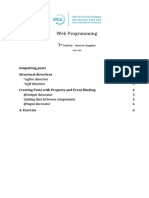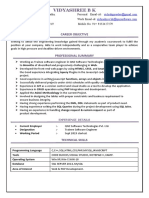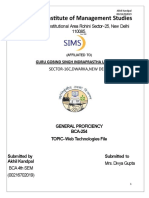0% found this document useful (0 votes)
14 views9 pagesDepractical Implementation Guide
This guide outlines a step-by-step approach for implementing an AI-based system to detect cyber threats on Dark Web forums, covering phases from understanding the Dark Web to deployment strategies. It includes detailed instructions on data collection, AI model development, ethical considerations, and building a real-time alert system. The guide emphasizes legal compliance and ethical monitoring throughout the process.
Uploaded by
Aladetuyi OluwatobiCopyright
© © All Rights Reserved
We take content rights seriously. If you suspect this is your content, claim it here.
Available Formats
Download as DOCX, PDF, TXT or read online on Scribd
0% found this document useful (0 votes)
14 views9 pagesDepractical Implementation Guide
This guide outlines a step-by-step approach for implementing an AI-based system to detect cyber threats on Dark Web forums, covering phases from understanding the Dark Web to deployment strategies. It includes detailed instructions on data collection, AI model development, ethical considerations, and building a real-time alert system. The guide emphasizes legal compliance and ethical monitoring throughout the process.
Uploaded by
Aladetuyi OluwatobiCopyright
© © All Rights Reserved
We take content rights seriously. If you suspect this is your content, claim it here.
Available Formats
Download as DOCX, PDF, TXT or read online on Scribd
/ 9























































































